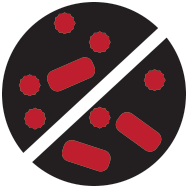How Soil Fumigation Works

Step 1:
Fumigants are injected as liquids into the soil to control harmful insects, nematodes, weeds, bacteria, fungi, and diseases that have invaded a field.

Step 2:
The fumigant volatizes into gas diffusing through the soil air space, radiating out from the points of injection.

Step: 3
The treatment significantly reduces the harmful pathogens and rebalances the native beneficial soil microbe population, conditioning it for planting.

Step: 4
The fumigant decomposes rapidly in the soil; and some fumigants, like Chloropicrin, actually biodegrade into plant nutrients.

Step: 5
Crop planting takes place in the newly conditioned soil.

Step 6:
Healthy plants are able to maximize their water and nutrient use and grow to full yield potential with no uptake of fumigant into the plant root or residue on the plant.

1. Fumigants are injected as liquids into the soil to control harmful insects, nematodes, weeds, bacteria, fungi, and diseases that have invaded a field.
2. The fumigant volatizes into gas diffusing through the soil air space, radiating out from the points of injection.
3. The treatment significantly reduces the harmful pathogens and rebalances the native beneficial soil microbe population, conditioning it for planting.
4. The fumigant decomposes rapidly in the soil; and some fumigants, like Chloropicrin, actually biodegrade into plant nutrients.
5. Crop planting takes place in the newly conditioned soil.
6. Healthy plants are able to maximize their water and nutrient use and grow to full yield potential with no uptake of fumigant into the plant root or residue on the plant.
Trident Ag works closely in collaboration with universities and researchers to protect our food supply and health. The chemicals listed below are registered in varying chemical formulations for maximum performance, safety, and environmental health. All have been listed as exempt under EPA residue tolerance, meaning no resulting residue in or on food grown after soil treatment with these chemistries.
| Fumigant | Example Trade Names | Safely Used Since | Benefits | Movement through Soil |
|---|---|---|---|---|
| Methyl Bromide | MBC-33, Tri-Con | 1960s | Excellent broad-spectrum fumigant, effective for managing many insects, nematodes, weeds, bacteria, and fungi | Excellent |
| Chloropicrin | Strike, Tri-Clor, Tri-Con | 1920s | Excellent control of many fungal and bacterial pathogens; also controls some insects, nematodes, and weeds | Good in well-tilled, non-saturated soil |
| 1,3-Dichloropropene | Telone™ by Teleos, InLine™ by Teleos | 1950s | Excellent for preplant nematode control and when mixed with Chloropicrin, also controls numerous fungal and bacterial plant pathogens | Good in well-tilled, low moisture soil |
Product Stewardship
Trident is committed to the safe and responsible use of soil fumigation. We strive to protect you, your community and the environment. Trident relies on 30+ years of experience, thousands of in-field application trials, and hundreds of university research studies to find the perfect formulation that is healthy for your crops, profitable for your farm, and safe for your community.
Serving the Pacific Northwest
Washington, Oregon, and Idaho
